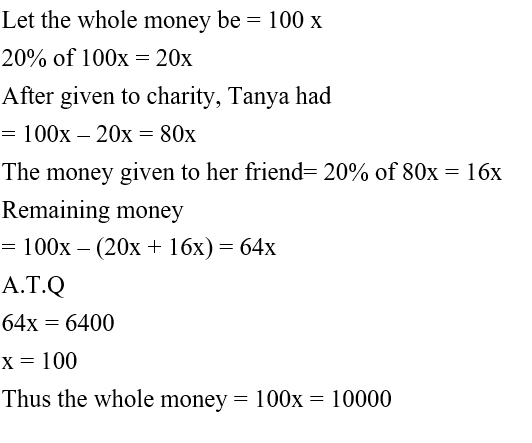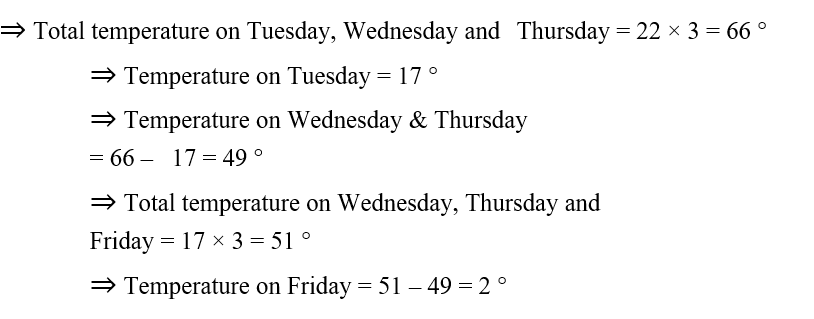Question 1:
Direction : What Approximate value should come in place of question mark (?) in the following questions?
निर्देश : निम्नलिखित प्रश्नों में प्रश्न चिह्न (?) के स्थान पर अनुमानित मान क्या होना चाहिए?
819.991 ÷ 21 × 3.01 + ? = 240
Question 2:
Direction : What Approximate value should come in place of question mark (?) in the following questions?
निर्देश : निम्नलिखित प्रश्नों में प्रश्न चिह्न (?) के स्थान पर अनुमानित मान क्या होना चाहिए?
? = 25.012% of 4000 + 1/7 of 3464.98
Question 3:
Direction : What Approximate value should come in place of question mark (?) in the following questions?
निर्देश : निम्नलिखित प्रश्नों में प्रश्न चिह्न (?) के स्थान पर अनुमानित मान क्या होना चाहिए?
102.991% of 6400.971 – 3/7 % of 6299.98 + 12.012 =?
Question 4:
Direction : What Approximate value should come in place of question mark (?) in the following questions?
निर्देश : निम्नलिखित प्रश्नों में प्रश्न चिह्न (?) के स्थान पर अनुमानित मान क्या होना चाहिए?
433.01– 270.01÷(12.12% of 75.012)= ?
Question 5:
Direction : What Approximate value should come in place of question mark (?) in the following questions?
निर्देश : निम्नलिखित प्रश्नों में प्रश्न चिह्न (?) के स्थान पर अनुमानित मान क्या होना चाहिए?
39.991% of 440.011 + ? % of 654.912 = 228.5
Question 6:
A sum of money invested for 5 years in Scheme 1 which offers SI at a rate of 5% pa. The amount received from Scheme 1 after 5 years invested for 2 years in Scheme 2 which offers CI rate of 10% pa. If the interest received from Scheme 2 was Rs.819. What was the sum invested in Scheme 1?
योजना 1 में 5 वर्षों के लिए निवेश की गई राशि जो साधारण ब्याज 5% प्रति वर्ष की दर से प्रदान करती है। 5 साल के बाद योजना 1 से प्राप्त राशि योजना 2 में 2 साल के लिए निवेश की जाती है जो 10% की दर पर प्रति वर्ष चक्रवृद्धि ब्याज प्रदान करती है। यदि योजना 2 से प्राप्त ब्याज 819 रुपये था तो योजना 1 में निवेश की गयी राशि क्या थी?
Question 7: 
Question 8:
Tanya gave 20% in charity from her salary, and then 20% from the remaining she gave to her friend as loan. She is left now with 6400. What is the salary of Tanya?
तान्या ने अपने वेतन से 20% दान में दिया और फिर शेष में से 20% अपनी दोस्त को कर्ज दिया| अब उसके पास 6400 बचे हैं | तान्या का वेतन कितना है?
Question 9:
Last week the average temperature of Roorkee on Tuesday, Wednesday and Thursday was 22° and the average on Wednesday, Thursday and Friday was 17°. If the temperature on Tuesday was17°. Evaluate the temperature on Friday?
पिछले सप्ताह मंगलवार, बुधवार और गुरुवार को रुड़की का औसत तापमान 220 था और बुधवार, गुरुवार और शुक्रवार को औसत तापमान 170 था। यदि मंगलवार को तापमान 170 था। तो शुक्रवार के तापमान का मूल्यांकन करें?
Question 10:
Abhilasha goes to office by scooty at a speed of 40 m/s and reaches there 9 seconds earlier. If she goes at a speed of 12 m/s, she reaches there 7 seconds late. Calculate the distance she travels to reach her office?
अभिलाषा अपने कार्यालय स्कूटी से 40 मी/सें की गति से जाती है और वहां 9 सेकेंड पहले पहुंच जाती है। यदि वह 12 मी/सें की गति से जाए तो वह 7 सेकेंड देरी से पहुंचती है। कार्यालय पहुंचने के लिए उसके द्वारा तय की गई दूरी ज्ञात करें?




